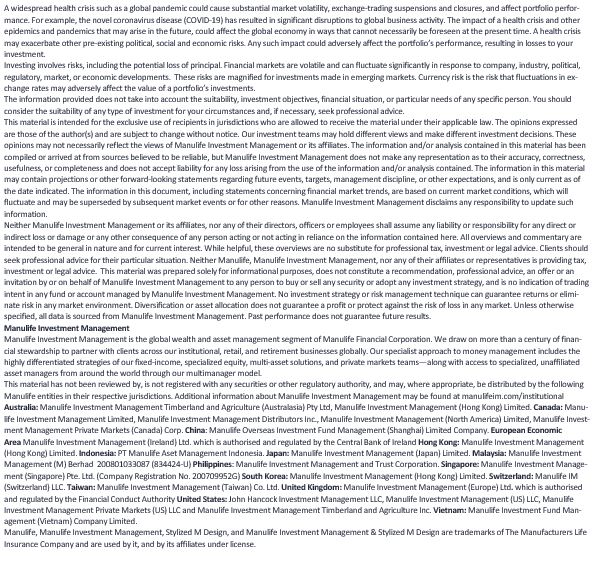
Seeking to deliver higher yield from ‘sweet spot’ of the yield curve
The year to date has been a rough ride for investors. Markets are down, conflict has erupted, and Canada and the U.S. have entered a rising interest-rate environment. However, Jean-Francois Giroux, portfolio manager, Manulife Smart Short-Term Bond ETF (TERM), believes there is a glimmer of light in fixed income, with corporate bonds starting to provide some attractive propositions.
TERM is designed to diversify an investors fixed-income allocation, aiming to deliver a higher yield for the same volatility as the reference index. “We optimize for sectors and parts of the yield curve that we think, over the long term, may deliver increased yield while maintaining the same risk profile as the index,” he says. The fund seeks to achieve this by combining a systematic and active management approach.
TERM is currently 100% in corporate bonds, instead of federal and provincial, because over the whole market cycle, corporate bonds tend to offer better upside potential. Within corporate bonds, the ETF is overweight communications, industrials and real estate, and is focused on the “sweet spot”, the short end of the yield curve.
“We are in an environment where investors need to be careful about duration and they need to understand their risk appetite,” Giroux says. “With inflation at historic highs, central banks and markets are both pricing in hikes over the short- and medium-term. There is also a fear, acknowledged by Federal Reserve chair Jerome Powell, that it’s behind the curve in terms of getting a lid on inflation.
While the duration decision is not quite as easy of a call as it was in early 2021, short duration fixed income may help preserve capital and produce income in a rising rate environment.
However, Giroux believes that while the language from most central bankers is hawkish and aggressive, he doesn’t expect all the hikes forecast by the market to be delivered. He explains that, at some point, the data will start to turn. And when Canada reaches neutral rate, between 2 to 3%, Giroux expects the language and expectations to turn too. The focus will then switch to worries about recession risk in the economy and output concerns.
“For the time being, central banks will deliver [rate hikes], for sure,” he says. “But there will come a point later this year when expectations are going to fall.”
So, while the short end of the curve is being driven by rate hikes, Giroux believes the market has overcooked how high they will go. And with quantitative easing well priced into the market, his message to advisors is not to dwell too much in 2022’s rough ride so far but to assess current levels and look ahead to attractive corporate yields.
Giroux and his team also manage two other ETFs – the Manulife Smart Corporate Bond ETF (CBND) and the Manulife Smart Core Bond ETF (BSKT). Both ETFs combine the same systematic and active approach as TERM and seek to match the volatility of the benchmark while delivering a higher yield. But given the market environment, TERM has seen the most interest – attracting over $600M since launch in November 2020 – as investors seek to preserve capital by reducing duration risk.
With the team having been around since 1998, and with members coming from insurance, pension fund and quant side, the model, tools, and algorithms are well developed over the past 20-plus years. Marry that with Manulife’s reputation and its huge footprint in the Canadian fixed-income markets, and it’s no surprise TERM benefits from opportunities in the market, either on the secondary market or from new issues. TERM offers investors the prospect of short-end optimization in these volatile times.

